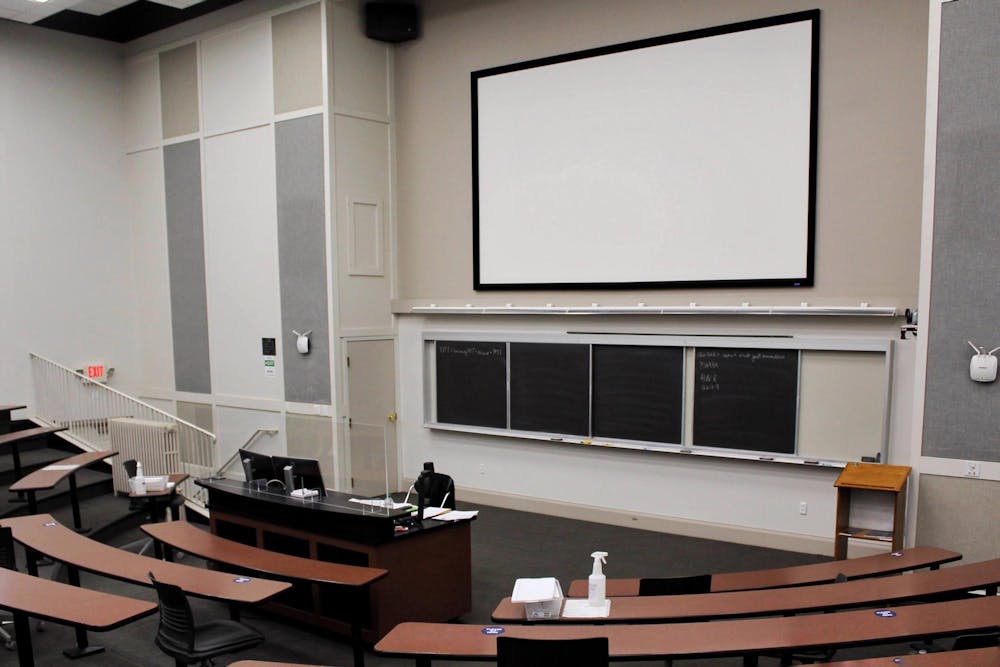The University claims to be a leader in the field of education. As a result, students are often subjected to the latest pedagogical advancements and educational technology. While some of these ventures do pay off, others fall short. A notable example of the latter is the flipped classroom model, where students take notes on lectures as homework prior to class, then work through problems in class with the assistance of the teacher. The goal of the flipped class model is to encourage student engagement by linking the material learned directly to the time put in. In short, flipped course models put the onus of learning on the students. While a creative change, this class structure sets students up to fail, and is a dangerous educational precedent to set.
One of the most effective learning strategies utilized in various fields is the philosophy of “see one, do one, teach one.” This strategy breaks down the introduction of new content into three distinct stages — the student watches the teacher demonstrate the new concept, then performs practice problems themselves, then teaches themselves or other students the content. Many students learn best through this method of learning because of the separation of learning into distinct stages. Moreover, this is an exceptionally flexible strategy which theoretically can be adapted to fit the needs of multiple students, something at which flipped classrooms fall short.
Flipped class models fail to organize learning into these defined stages, instead overwhelming students with a large volume of content in a short span of time. Moreover, the flipped class structure is one size fits all, something which contradicts research on teaching styles. Countless studies on the most effective teaching styles all come up with the same result — a mix of many teaching styles seems to be most effective. In contrast, flipped class models implicitly rely upon one style of teaching that is minimally adaptive, particularly to the needs of students who require additional support.
Consider a local example — many students in the School of Engineering and Applied Science must take APMA 2130, “Ordinary Differential Equations,” a required math class and foundational course for higher-level mathematics. ODE provides a strong foundation for applications in specific fields, especially for computer science.
In ODE, each class is preceded with a pre-class worksheet that guides the student through new content, which is graded on completion and effort — having something written down, even if it is not correct or relevant. Then, during class, groups work together to complete and submit an in-class worksheet graded on accuracy. Lastly, a written homework packet is assigned weekly, summarizing the contents of the unit into one lengthy assignment.
What makes ODE particularly poorly managed is the lack of supplementary lecture material — the only introduction to new material is through the pre-class worksheets. The current structure of ODE crams all three stages of learning into a single 50-minute session — a student is seeing content for the first time through their pre-class worksheet. Students must then teach themselves the content through their in-class worksheet while potentially explaining the content to their other group members. Cramming all of this “learning” into 50-minutes only to rinse and repeat four times a week fails to guarantee any long-term retention of content and sets a poor foundation for cumulative learning. Classes like this one set students up to fail.
Moreover, because students are unable to fully process and digest the information, flipped classroom models encourage problematic shortcuts and “convenient” learning tactics. Students want to get the grade and move on. Specifically, this means that students who feel lost in the course may rely heavily on other students or the TAs for answers without understanding the process of how to get there.
It is not just that students are getting bad grades. The flipped class model also leads to an increased reliance on the internet and generative artificial intelligence. A major motivator in many honor violations stems from feeling lost and overwhelmed in the course — something which is likely to occur in classes where students are solely responsible for their learning. The amount of material covered in flipped classes discourages the process of learning and forces the student to turn to these easier solutions just to keep up. Overall, by increasing stress and decreasing knowledge acquisition, the flipped classroom structure discourages learning and creates an environment where academic dishonesty can occur.
Given these deeply concerning pitfalls, the University should consider doing away with the flipped class structure. Many University students are required to take courses with a flipped model, in both the College and the Engineering school. It is not fair nor productive to force students to take pedagogically flawed classes, the repercussions of which will follow them through their academic and professional careers.
But if the University remains unwilling to commit to such drastic change, progress can still be made. One concrete tweak that can be made, even within existing flipped classroom models, is the assimilation of lecture content into class time instead of relying solely on students learning outside of class. This would increase the efficiency and success of in-class work, as students will be able to focus on mastery rather than just learning the basics. The bottom line is that courses must set students up for success and flipped classrooms, and flipped classes as they currently stand, will never accomplish this.
Heer Patel is a viewpoint columnist who writes about academics for The Cavalier Daily. She can be reached at opinion@cavalierdaily.com.
The opinions expressed in this column are not necessarily those of The Cavalier Daily. Columns represent the views of the authors alone.







